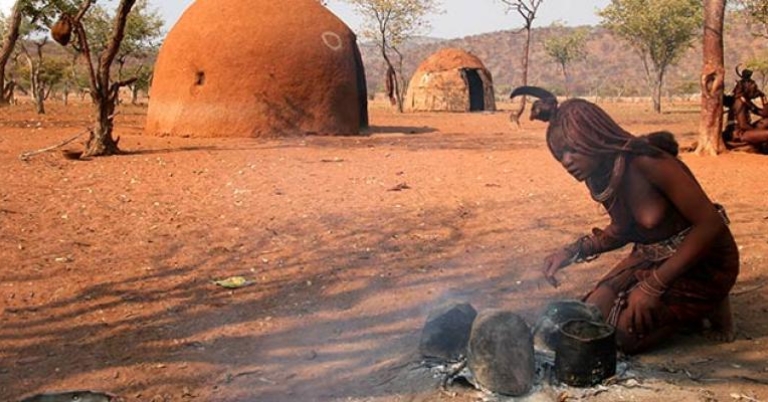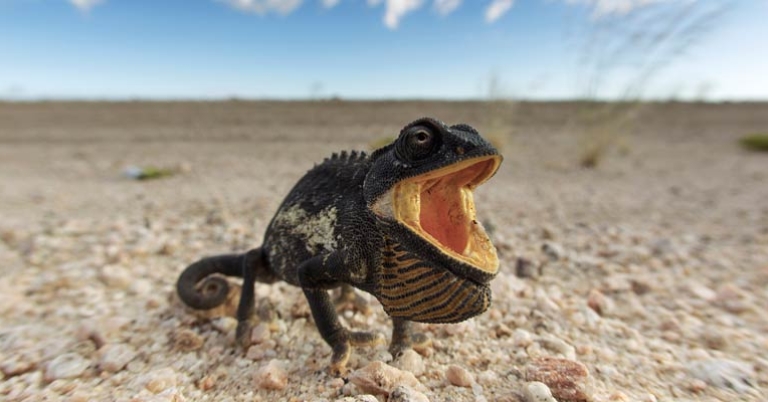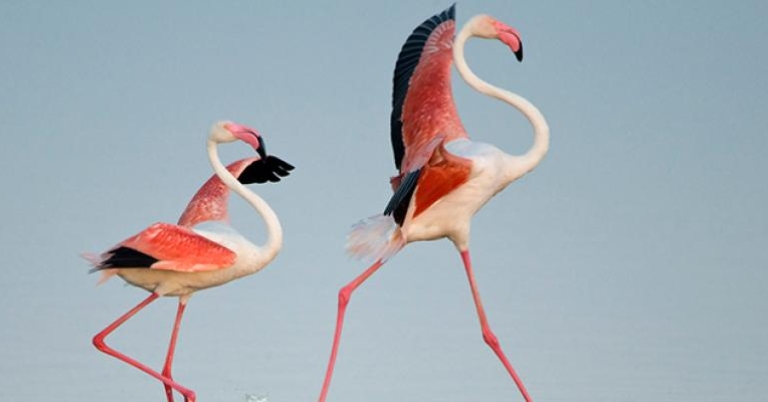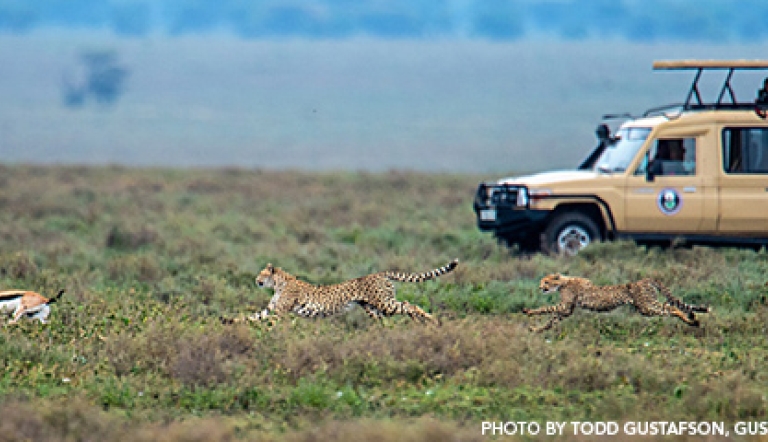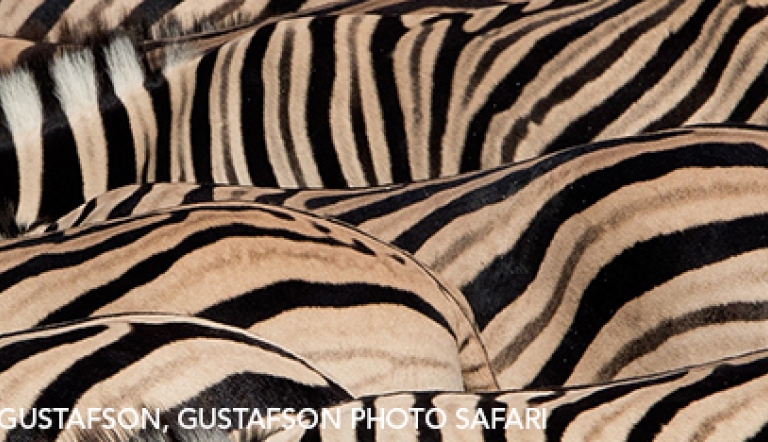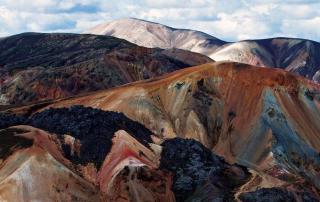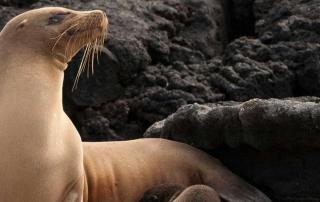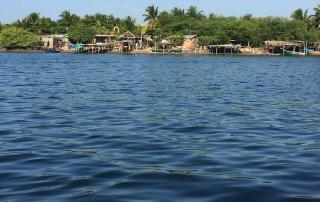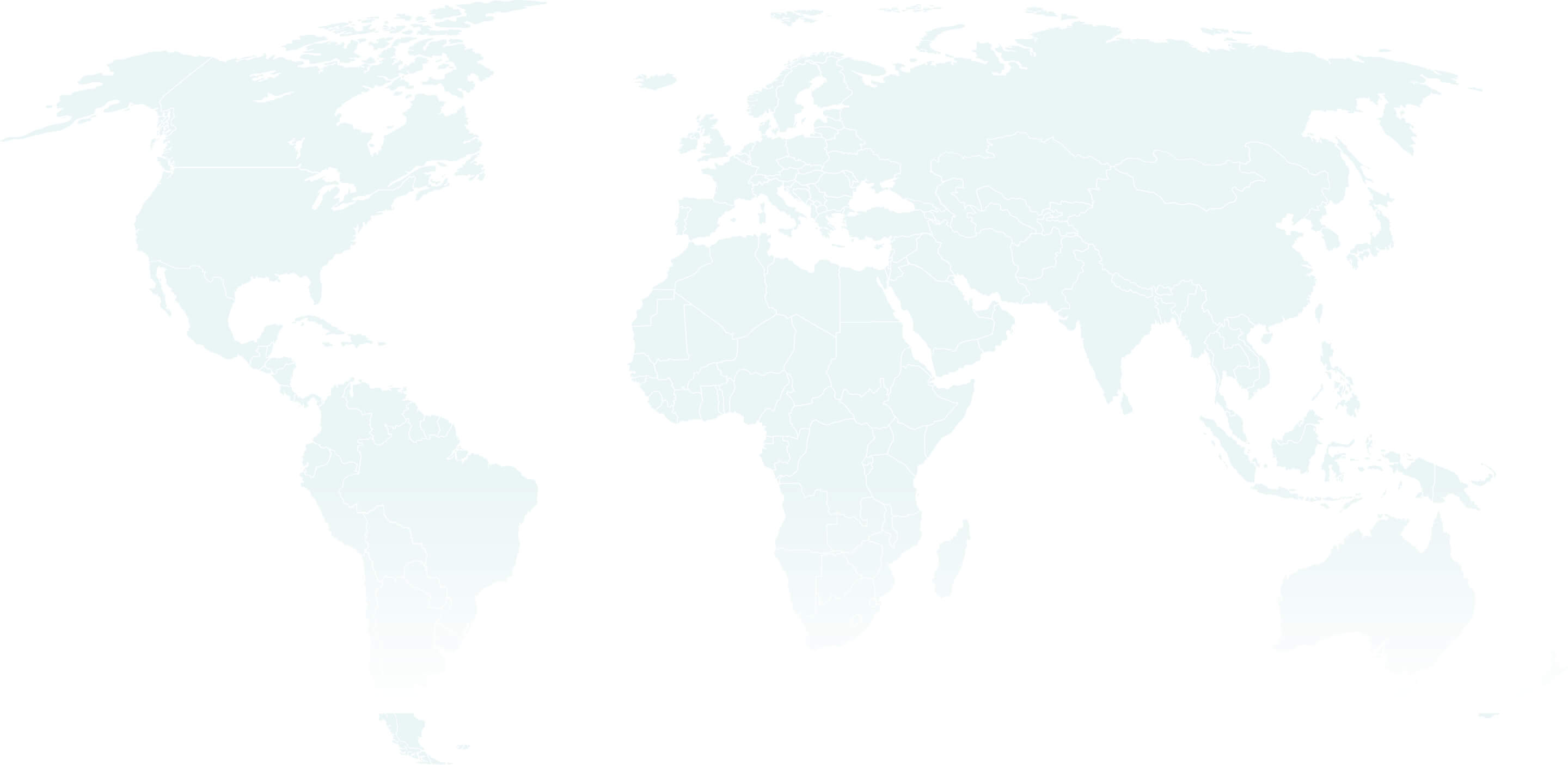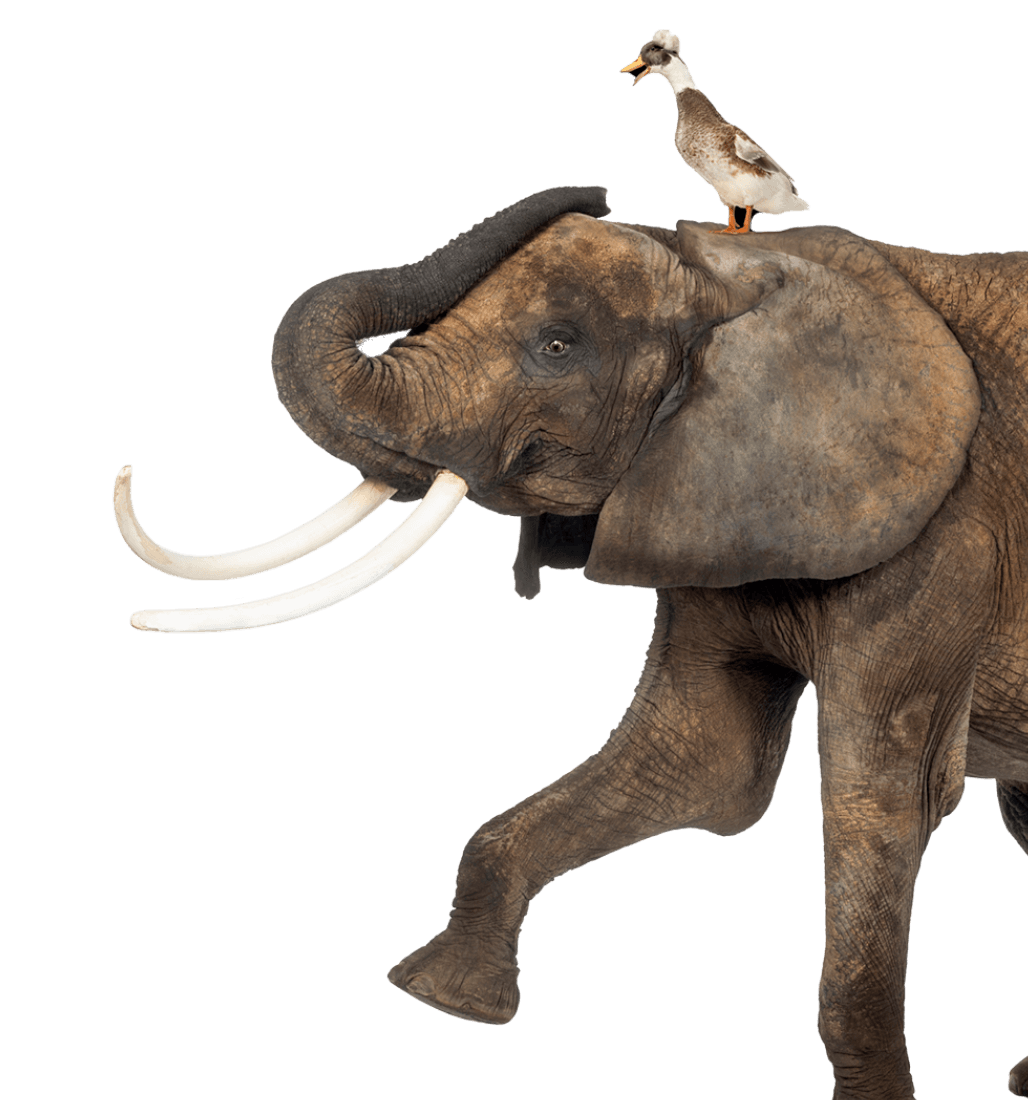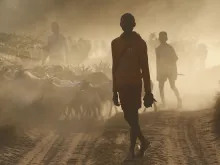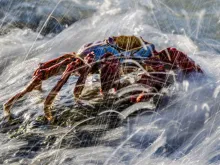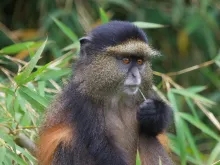The Namib, the oldest desert in the world, dominates Namibia’s landscape. Take time for visits to surrounding safari areas, which are visually impressive, with exquisite flora, towering red dunes, bush country and fascinating geological formations while traveling through Namibia. The animals that roam the extraordinary landscape are just as breathtaking. Wildlife commonly seen on safari includes buck species, elephants, giraffes, rhinos, and lions. Hundreds of bird, reptile and amphibian species round out the incredibly diverse wildlife in Namibia’s numerous reserves.
While exploring this gorgeous country, visit extraordinary places like Skeleton Coast, the site of hundreds of shipwrecks as well as the incredible Cape Cross Fur Seal Colony. Experience Damaraland, where 6,000 year old rock etchings are visible, and Etosha, Namibia’s legendary game park, where you will encounter animal species in their natural habitats.
Join Holbrook on one of our Namibia expeditions to experience the extreme beauty and culture that this blossoming country has to offer.
Environments
Namibia is an astounding environment overflowing with rugged and beautiful landscapes. Although it has the world’s most barren and inhospitable coastlines, Namibia is also home to an amazing wealth of wildlife that has adapted and thrived throughout the ages. It consists of four different landscapes, all coexisting on one land. The most prominent is the Namib, the world’s oldest desert, which runs the length of the country and is decorated with dry riverbeds, migrating dune belts, and awe-inspiring canyons. The majority of Namibia’s towns and villages are located on the central plateau, which is divided between craggy mountain ranges and sand-filled valleys. Next is the vast Kalahari Desert with its red sand and sparse vegetation. Finally, Kavango and Caprivi are regions blessed with copious amounts of rain and characterized by tropical forests, woodland savannahs, and rivers.
Wildlife
Namibia inspires visions of interesting flora, the otherworldly landscapes of Damaraland, the Skeleton Coast, and the towering red dunes of Sossusvlei, and the animals that range the landscape are just as breathtaking. Wildlife commonly seen on safari includes buck species, elephant giraffe, rhino, and lion. Hundreds of bird, reptile and amphibian species round out the incredibly diverse wildlife in Namibia’s numerous reserves. Etosha National Park, one of Africa’s best loved wildlife sanctuaries, is inhabited by almost all African game species, including the Big Five: elephant, rhino, buffalo, lion, and leopard.
Culture
Namibian culture is fascinating. The Bantu inhabited Namibia after the San Bushmen and the Khoi. A rough coastline kept the colonialists out until the Germans claimed the country in the late 19th century. Next ruled by South Africa, Namibia was granted independence in 1990, making it one of the youngest nations in Africa and in the world. For travelers, highlights include Damaraland, home to 6,000 year old Bushman rock etchings and meeting with nomadic Himba tribal people adorned with traditional ornaments.
Entry & Exit Requirements
U.S. citizens must have a valid passport to enter Namibia. Passports must be valid for at least six months after your date of entry into Namibia and must have 3 or more blank passport pages.
In addition, U.S. citizens must have a visa to enter Namibia. We strongly recommend applying for your visa online in advance; to do so, visit https://eservices.mhaiss.gov.na/visaonarrival and select "New Visa on Arrival Application."
You will need to create an account and then complete the application. Be prepared with your passport, confirmation of accommodations and travel itinerary, proof of medical/travel insurance, and confirmation of adequate funds (which simply requires a confirmation click). If traveling with minor children, you will also need a full birth certificate and parental consent letter.
The cost for the Visa on Arrival is NAD $1,600 per person (approximately USD $90). This fee is subject to change at any time without prior notice.
The estimated processing time for a Visa on Arrival application is 48 hours. We recommend applying well in advance of your planned travel date to allow for possible delays.
Once approved, print your e-visa permit with the QR code for presentation on arrival. In Namibia, you’ll need to complete and sign a presented arrival form and present this to an immigration official.
If you are not traveling with a U.S. passport, please check with the Embassy of Namibia for the requirements based on your nationality.
Health Information
IMMUNIZATIONS
The Centers for Disease Control recommends that all travelers be up to date on routine vaccinations such as measles-mumps-rubella (MMR) vaccine, diphtheria-pertussis-tetanus vaccine, varicella (chicken pox) vaccine, and your yearly flu shot before every trip.
There are no vaccinations required for entry into Namibia.
Some physicians recommend that travelers get hepatitis A and typhoid vaccines before visiting Namibia.
Please consult your physician for additional information and recommendations based on your individual circumstances.
MALARIA
The CDC warns that travelers to Africa may be at risk for exposure to malaria. Malaria is caused by a parasite found in Anopheles mosquitos, which are active from dusk until dawn. Prevention is twofold: the use of anti-malarial drugs and the prevention of insect bites. If you choose to use an anti-malarial drug, as recommended by the CDC, see your physician for a prescription.
SUN EXPOSURE
The effects of the sun can be damaging to the eyes and skin. Spending time outdoors exposes you to the sun’s harmful ultraviolet (UV) rays, even on cloudy days. To protect yourself from the sun, use a broad spectrum sunscreen of at least SPF 15, protect skin with clothing, wear a wide-brimmed hat and sunglasses, and drink plenty of fluids.
Currency
The currency of Namibia is the Namibian Dollar.
Electricity
The electrical current in Namibia is 220V 50Hz AC. Travelers from the United States need to use a converter.
Time Zone
The time zone of Namibia is West Africa Time Zone (UTC+01:00).
Namibia observes Daylight Saving Time between the first Sunday in September and the first Sunday in April.
Departures and arrivals on flight schedules are listed in the local time.
Communications
PHONES
Namibia’s country code is +264.
To call Namibia (from the U.S.): Dial 011-264-(xx-xxx-xxxx)
To call the United States: Dial 001-(xxx-xxx-xxxx)
Please check with your cell phone provider if you’re unsure whether or not your cell phone will work internationally. Be aware that you are likely to incur additional charges for international use. It may be more affordable to purchase a local SIM card upon arrival.
INTERNET
There are Internet cafes in Namibia and some lodges offer WiFi. Connections can be slow and fees may be expensive.
Reading List
FIELD GUIDES
The Wildlife of Southern Africa
Vincent Carruthers & Kenneth Newman
With 1,200 color illustrations by a range of experts, this compact field guide includes all the birds, mammals, reptiles, amphibians, insects, fish and plants that a traveler is likely to encounter in southern Africa.
The Safari Companion
Richard Estes
An invaluable encyclopedic guide to Africa's mammals by a noted scientist, this perennial bestseller includes black-and-white drawings, an overview of each animal group and in-depth information. Written with the typical safari-goer in mind.
500 Common Bird Calls in Southern Africa
Doug Newman
Accounting for each species of southern African songbird, their songs, similar-sounding species, favored habitats and ranges, this reference is ideal for the voyaging birder. Includes a CD of bird calls.
Kingdon Pocket Guide to African Mammals
Jonathan Kingdon
A conveniently compact edition of Kingdon's gloriously illustrated Field Guide to African Mammals. The guide includes abbreviated information on identification, distribution, ecology and conservation status and 480 outstanding color illustrations and maps.
Photo Guide to Birds of Namibia
Ian Sinclair
A convenient, pocket-sized guide with color photos, maps and short descriptions.
The Kingdon Field Guide to African Mammals
Jonathan Kingdon
This stunningly-illustrated, comprehensive field guide by a leading authority includes over 500 of Kingdon's exquisite color paintings. Fully revised and updated with more than 1,100 species.
The Larger Illustrated Guide to Birds of Southern Africa
Ian Sinclair
Featuring beautiful illustrations, calendar bars and distribution maps, the newly revised Struik guide to Southern African birds is a local bestseller.
MAPS
Namibia Map
Reise Know How
A folded, indexed road map of Namibia, showing all major and many minor roads, cities and towns, at a scale of 1:1,200,000.
Safari Planning Map, East & Southern Africa
The Africa Adventure Company
This large-scale colorful map covers the top safari countries and important wildlife reserves of East and Southern Africa. With enlargements of key regions like Northern Tanzania, Southern Kenya and Northern Botswana to Victoria Falls, the map includes information on planning your safari and climate graphs.
GUIDEBOOKS
Bradt Guide Namibia
Chris McIntyre
From the desolate Skeleton Coast to the lush Kavango and Caprivi Strip to the picturesque capital of Windhoek, Bradt has it covered.
Culture Smart! Namibia
Sharri Whiting
A concise and practical guide to local customs, etiquette and culture with a short overview of the land and people along with practical travel advice.
Insight Guides Namibia
Insight Guides
This illustrated, surprisingly informative guide includes excellent color maps and thoughtful short essays on history, culture and attractions.
Lonely Planet Botswana & Namibia
Lonely Planet
An informative practical guide to Botswana and its attractions, including nearby Victoria Falls.
NATURAL HISTORY
Horn of Darkness, Rhinos on the Edge
Carol Cunningham & Joel Berger
A lively account of field work, combining adventure, natural history and thoughtful commentary on the plight of the severely endangered black rhinoceros in Namibia.
Skeleton Coast
Amy Schoeman
This revised edition of Shoenman's classic, first published in 1971, shows the magnificent landscapes, wildlife and nature of the Namib desert, Skeleton Coast and northwest Namibia in 160 color essays and accompanying essays on geology, climate, nature and history.
Soul of a Lion, One Woman's Quest to Rescue Africa's Wildlife Refugees
Barbara Bennett
Bennett recounts with affection and humor her volunteer sabbatical at Namibia's Harnas Wildlife Foundation, where she worked with orphaned, injured and abandoned wild animals alongside Harnas' inspiring founder, Marieta van der Merwe.
The Black Rhinos of Namibia, Searching for Survivors in the African Desert
Rick Bass
Bass' lifelong search for rare and iconic animals takes him into the harsh terrain of the Namib desert on the trail of the rare black rhino. With insightful prose, Bass tells the story of the rhinos -- brought back from near-extinction thanks to cutting edge conservation.
The Elephant's Secret Sense, The Hidden Life of the Wild Herds of Africa
Caitlin O'Connell
O'Connell chronicles the extraordinary social lives of elephants in Etosha National Park with this powerful account of a 14-year study.
HISTORY & CULTURE
Africa, a Biography of the Continent
John Reader
With the ease of a practiced journalist, Reader weaves a masterful and lively tale of the continent, from ancient cultures to modern times. Both authoritative and informal, this is a splendid introduction to all of Africa.
Picturing Bushmen, The Denver African Expedition of 1925
Robert James Gordon
Serious-minded, wonderfully illustrated and informative, this book not only documents the 1925 expedition to Etosha in search of the "Bushman," it also cleverly shows the key role of the expedition in romanticizing the Heikum.
The Scramble for Africa
Thomas Pakenham
Absorbing and meticulously researched, this in-depth history of the Victorian land grab in 19th century Africa includes excellent portraits of the egomaniacal personalities who overran the continent.
This Is Namibia
Peter Joyce
A useful primer to Namibia, this visual essay on the up-and-coming African country surveys its cultures, wildlife and diverse landscapes. Peter Joyce takes readers from Namibia's icy Atlantic shores to the arid Kalahari Desert, revealing a land of towering sand dunes, ancient civilizations and enigmatic beauty.


